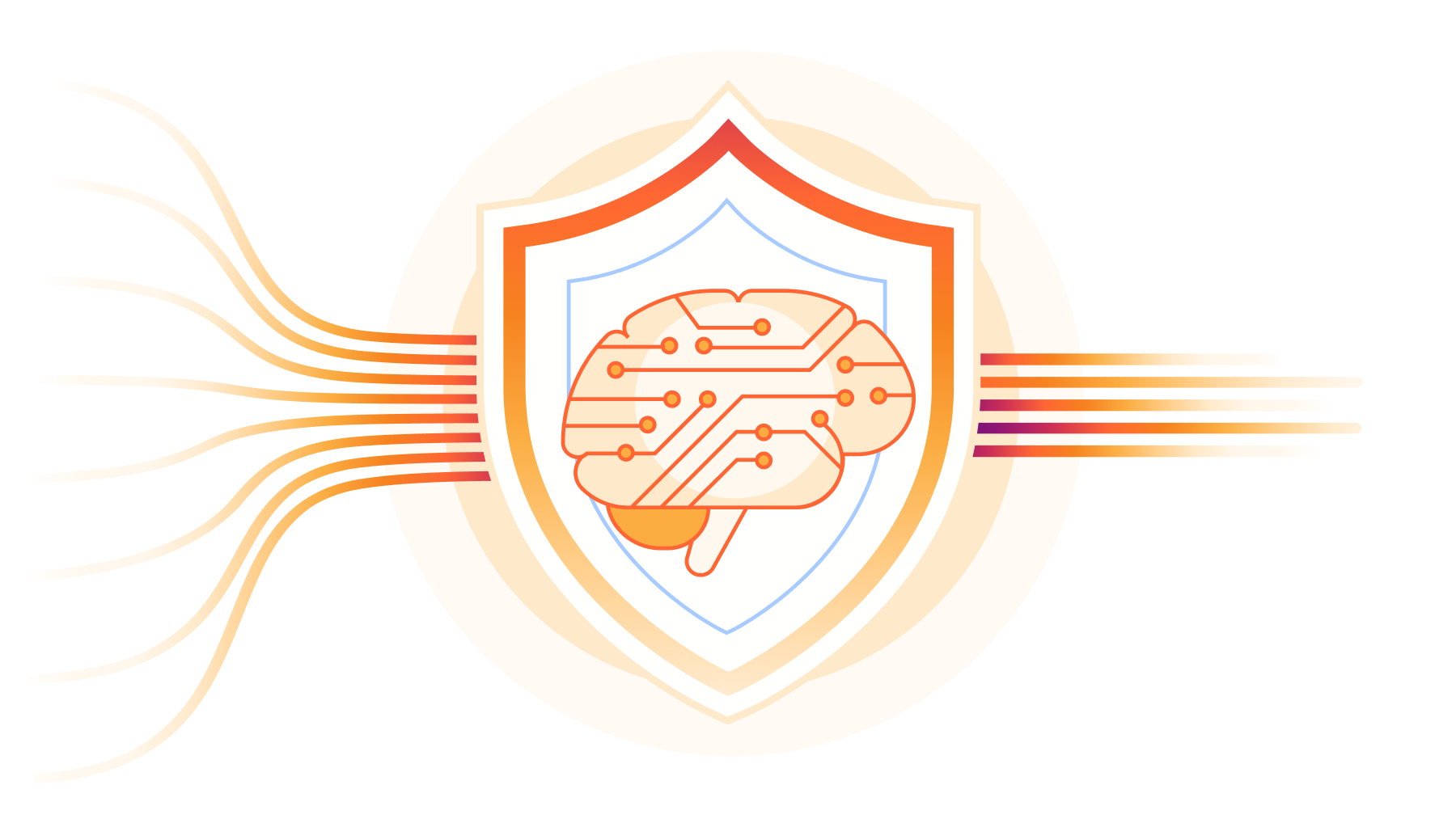KeyTrap!
Yet another DNS vulnerability has been exposed. The language of the press release revealing the vulnerabil;ity is certainly dramatic, with "devasting consequences" and the threat to "completely disable large parts of the worldwide Internet."" If this is really so devastating then perhaps we should look at this in a little more detail to see what’s going on, how this vulnerability works, and what the response has been.KeyTrap!
Yet another DNS vulnerability has been exposed. The language of the press release revealing the vulnerabil;ity is certainly dramatic, with "devasting consequences" and the threat to "completely disable large parts of the worldwide Internet."" If this is really so devastating then perhaps we should look at this in a little more detail to see what’s going on, how this vulnerability works, and what the response has been.The Future of Network Engineering in the AI/ML era

It seems like yesterday when I saw my first network automation presentation at a conference. I remember it very well; it was in 2015 at the Cisco Network Innovation Summit in Prague. Mr. Tim Szigeti was presenting the first version of the Cisco APIC-EM, the future Cisco Digital Network Architecture (DNA) controller. I talked already about it in a previous article, written in 2018, about my journey toward network programmability and automation. After its presentation, and for many years afterward, the question was on everyone’s lips: Is this the end…
The post The Future of Network Engineering in the AI/ML era appeared first on AboutNetworks.net.
Slurp’it – Network Inventory & Discovery Tool

I recently came across a neat tool called 'Slurp'it', a Network Inventory and Discovery solution. If you've been following my blog for a while, you know I just had to give it a try and share my findings with you. So, in this post, I'm going to quickly go over how to get it up and running, along with a few ways you might find it useful. Let's dive in.
What We Will Cover?
- What is Slurp'it?
- Licenses
- Installation and Setup
- Data Collection
- Custom Planning
- Some Use Cases
What is Slurp'it?
The official definition is "Slurp’it is a powerful and easy-to-use network discovery solution that offers 100% accurate network inventory. No coding required." Out of the box, the tool supports almost all the vendors (117 as of writing this)
In a nutshell, Slurp'it simplifies the whole process of understanding your network's inventory. All you need to do is provide the IP address or hostname of your devices, along with the login credentials. Slurp'it takes it from there. It executes various 'show' commands on your devices, usesTextFSM to parse the outputs, and finally presents you with a tidy table detailing everything it has discovered. It's straightforward yet effective, Continue reading
Understanding BGP Communities
The post Understanding BGP Communities appeared first on Noction.
Worth Reading: Talent Gap in IT
If you need a good rant about Thought Leaders, Talent Gap, and Certification-Based-Hiring, look no further than I see a different gap from here!. Here’s a choice tidbit:
Every single job description that requires some sort of certification must be treated with suspicion. Demanding a certification usually means that you don’t know what you want, and you’re just outsourcing your thinking to someone else.
Have fun!
Worth Reading: Talent Gap in IT
If you need a good rant about Thought Leaders, Talent Gap, and Certification-Based-Hiring, look no further than I see a different gap from here!. Here’s a choice tidbit:
Every single job description that requires some sort of certification must be treated with suspicion. Demanding a certification usually means that you don’t know what you want, and you’re just outsourcing your thinking to someone else.
Have fun!
AWS EKS Cluster with Terraform
https://codingpackets.com/blog/aws-eks-cluster-with-terraform
How Undersea Cable Cuts are Making Global Business Increasingly Risky
With no viable alternatives, governments, enterprises, and operators team to tackle longstanding undersea cable resiliency challenges.Worth Exploring: PCAP Analysis with Generative AI
John Capobianco published the source code of his Packet Buddy application on GitHub. It’s a Python UI that takes a PCAP file, converts it to JSON, and includes that JSON as part of the ChatGPT chat, allowing you to discuss the captured packets with ChatGPT.
His idea is one of the best uses of generative AI in networking I’ve seen so far, as long as you remember that you’re dealing with an overconfident intern who has no problem making up an answer just to sound smart. Have fun!
Finally, if you don’t want to use ChatGPT (I wouldn’t blame you) or send captured data into The Cloud, someone already adapted his idea to use local LLMs.
Worth Exploring: PCAP Analysis with Generative AI
John Capobianco published the source code of his Packet Buddy application on GitHub. It’s a Python UI that takes a PCAP file, converts it to JSON, and includes that JSON as part of the ChatGPT chat, allowing you to discuss the captured packets with ChatGPT.
His idea is one of the best uses of generative AI in networking I’ve seen so far, as long as you remember that you’re dealing with an overconfident intern who has no problem making up an answer just to sound smart. Have fun!
Finally, if you don’t want to use ChatGPT (I wouldn’t blame you) or send captured data into The Cloud, someone already adapted his idea to use local LLMs.
Hedge 216: Automation Success Stories
One thing we often hear about automation is that its hard because there are so many different interfaces. On this episode of the Hedge, Daniel Teycheney joins Ethan Banks and Russ White to discuss how they started from a simple idea and ended up building an automation system that does cross vendor boundaries within a larger discussion about automation and APIs.
HN724: How Packets Move Through a Network Device
Today we metaphorically pop open the hood of switches and routers, taking a look at the mechanics of how they work. We cover the three states: configuration, operational, and forwarding. We talk RIB and FIB, along with CAM, TCAM, and MPLS. We also cover line rate, port-to-port latency, and buffers. Whether it’s been awhile since... Read more »Now’s the Time to Optimize Cloud Costs: Here’s How
By choosing the right cloud at the right time, adjusting one’s cloud strategy as needed, and factoring in hidden fees, businesses have the best chance at optimizing cloud costs effectively.Protocol detection with Cloudflare Gateway

Cloudflare Gateway, our secure web gateway (SWG), now supports the detection, logging, and filtering of network protocols regardless of their source or destination port. Protocol detection makes it easier to set precise policies without having to rely on the well known port and without the risk of over/under-filtering activity that could disrupt your users’ work. For example, you can filter all SSH traffic on your network by simply choosing the protocol.
Today, protocol detection is available to any Enterprise user of Gateway and supports a growing list of protocols including HTTP, HTTPS, SSH, TLS, DCE/RPC, MQTT, and TPKT.
Why is this needed?
As many configuration planes move to using RESTful APIs, and now even GraphQL, there is still a need to manage devices via protocols like SSH. Whether it is the only management protocol available on a new third party device, or one of the first ways we learned to connect to and manage a server, SSH is still extensively used.
With other legacy SWG and firewall tools, the process of blocking traffic by specifying only the well known port number (for example, port 22 for SSH) can be both insecure and inconvenient. For example, if you used SSH Continue reading
Launching email security insights on Cloudflare Radar

During 2021's Birthday Week, we announced our Email Routing service, which allows users to direct different types of email messages (such as marketing, transactional, or administrative) to separate accounts based on criteria such as the recipient’s address or department. Its capabilities and the volume of messages routed have grown significantly since launch.
Just a few months later, on February 23, 2022, we announced our intent to acquire Area 1 Security to protect users from phishing attacks in email, web, and network environments. Since the completion of the acquisition on April 1, 2022, Area 1's email security capabilities have been integrated into Cloudflare's secure access service edge (SASE) solution portfolio, and now processes tens of millions of messages daily.
Processing millions of email messages each day on behalf of our customers gives us a unique perspective on the threats posed by malicious emails, spam volume, the adoption of email authentication methods like SPF, DMARC, and DKIM, and the use of IPv4/IPv6 and TLS by email servers. Today, we are launching a new Email Security section on Cloudflare Radar to share these perspectives with you. The insights in this new section can help you better understand the state of email security Continue reading
Network performance update: Security Week 2024

We constantly measure our own network’s performance against other networks, look for ways to improve our performance compared to them, and share the results of our efforts. Since June 2021, we’ve been sharing benchmarking results we’ve run against other networks to see how we compare.
In this post we are going to share the most recent updates since our last post in September, and talk about how we are getting as fast as we are.
How we stack up
Since June 2021, we’ve been taking a close look at the most reported eyeball-facing ISPs and taking actions for the specific networks where we have some room for improvement. Cloudflare was already the fastest provider for TCP Connection time at the 95th percentile for 44% of the networks around the world (we define a network as country and AS number pair). We chose this metric to show how our network helps make your websites faster by getting you to where your customers are. Taking a look at the numbers, in July 2022, Cloudflare was ranked #1 in 33% of the networks and was within 2 ms (95th percentile TCP Connection Time) or 5% of the #1 provider for Continue reading
Harnessing chaos in Cloudflare offices

In the children’s book The Snail and Whale, after an unexpectedly far-flung adventure, the principal character returns to declarations of “How time’s flown” and “Haven’t you grown?” It has been about four years since we last wrote about LavaRand and during that time the story of how Cloudflare uses physical sources of entropy to add to the security of the Internet has continued to travel and be a source of interest to many. What was initially just a single species of physical entropy source – lava lamps – has grown and diversified. We want to catch you up a little on the story of LavaRand. This blog post will cover the new sources of “chaos” that have been added to LavaRand and how you can make use of that harnessed chaos in your next application. We’ll cover how public randomness can open up uses of publicly trusted randomness — imagine not needing to take the holders of a “random draw” at their word when they claim the outcome is not manipulated in some way. And finally we’ll discuss timelock encryption which is a way to ensure that a message cannot be decrypted until some chosen time in the Continue reading
Log Explorer: monitor security events without third-party storage

Today, we are excited to announce beta availability of Log Explorer, which allows you to investigate your HTTP and Security Event logs directly from the Cloudflare Dashboard. Log Explorer is an extension of Security Analytics, giving you the ability to review related raw logs. You can analyze, investigate, and monitor for security attacks natively within the Cloudflare Dashboard, reducing time to resolution and overall cost of ownership by eliminating the need to forward logs to third party security analysis tools.
Background
Security Analytics enables you to analyze all of your HTTP traffic in one place, giving you the security lens you need to identify and act upon what matters most: potentially malicious traffic that has not been mitigated. Security Analytics includes built-in views such as top statistics and in-context quick filters on an intuitive page layout that enables rapid exploration and validation.
In order to power our rich analytics dashboards with fast query performance, we implemented data sampling using Adaptive Bit Rate (ABR) analytics. This is a great fit for providing high level aggregate views of the data. However, we received feedback from many Security Analytics power users that sometimes they need access to a more granular view Continue reading
Introducing Requests for Information (RFIs) and Priority Intelligence Requirements (PIRs) for threat intelligence teams

Cloudforce One is our threat operations and research team. Its primary objective: track and disrupt threat actors targeting Cloudflare and the customer systems we protect. Cloudforce One customers can engage directly with analysts on the team to help understand and stop the specific threats targeting them.
Today, we are releasing in general availability two new tools that will help Cloudforce One customers get the best value out of the service by helping us prioritize and organize the information that matters most to them: Requests for Information (RFIs) and Priority Intelligence Requirements (PIRs). We’d also like to review how we’ve used the Cloudflare Workers and Pages platform to build our internal pipeline to not only perform investigations on behalf of our customers, but conduct our own internal investigations of the threats and attackers we track.
What are Requests for Information (RFIs)?
RFIs are designed to streamline the process of accessing critical intelligence. They provide an avenue for users to submit specific queries and requests directly into Cloudforce One's analysis queue. Essentially, they are a well-structured way for you to tell the team what to focus their research on to best support your security posture.
Each RFI filed is routed to an Continue reading